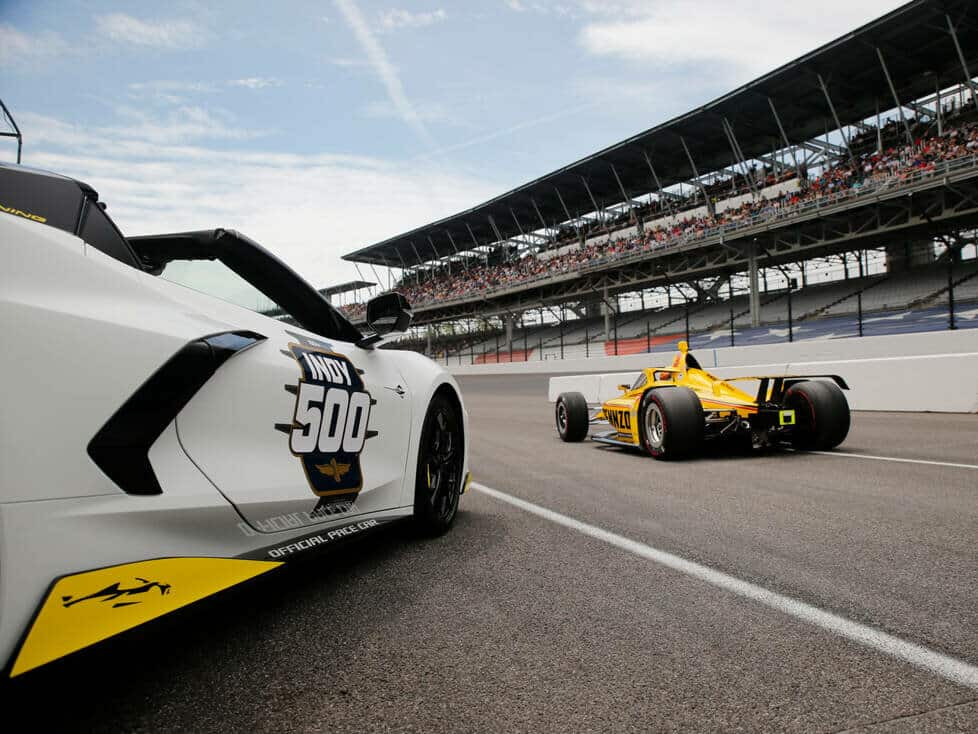From now on, the qualifying procedure at the IndyCar season highlight will be a new one: instead of Top-9 Shootout, there will be Top-12 Shootout, culminating in Top-6 Shootout
In less than four weeks, on 21/22 May, the two-day qualifying for the 2022 edition of the Indianapolis 500 will take place. The format will be different to what we have become accustomed to in previous years.
In an effort to bring the qualifying procedure at the season highlight closer to that of a “normal” IndyCar weekend, there will now also be three qualifying segments on the Indianapolis oval with progressively fewer participants. As on circuits and street circuits, the final segment at the Indy 500 will now be a six-strong field.
What does the new qualifying format at the Indy 500 look like in detail? On the first day of qualifying (Saturday, 21 May), all registered participants will first drive at least one four-lap run, or several four-lap runs if desired. The order at the fall of the chequered flag on Saturday is the one on the basis of which the second qualifying day (pole day) will start. So far, so well known.
Top-12 instead of Top-9 shootout, but only as a preliminary decision
On Pole Day (Sunday 22 May), the drivers from P13 upwards of Saturday’s result will first contest grid positions 13 to 33 in reverse order. For this session, each driver has only one four-lap run, not several.
In the increasingly unlikely event this year that the entry list for the Indy 500 contains more than 33 entrants, only grid positions 13 to 30 will be determined initially on Sunday. The last row of the grid (P31 to P33) will then be determined in a separate Last Row Shootout. However, this session will be dropped if there are only 33 (or even less) entries.
Independently of whether there is the so-called “bumping” in the form of the Last-Row-Shootout or not: The highlight on Pole-Day is the fight for the front rows of the grid including the pole. From now on, this fight will take place in two segments instead of just one segment.
First, the top 12 from Saturday’s results will drive their four-lap run on Sunday in reverse order. However, the first twelve places on the grid will not be allocated immediately, but only starting positions 7 to 12.
Top-6-Shootout for the first two rows of the starting grid
Followed by the top 6 of the top 12 shootout, in reverse order, will once again go for a four-lap run. Only this six-man final qualifying segment (“Firestone Fast Six”) decides P1 to P6 on the grid.
In summary: The shootout for the prestigious Indy 500 pole will be increased from nine to twelve drivers starting this year. After all twelve have completed a four-lap run on Sunday, there will be another cut. Finally, the top six of this session will drive their decisive second four-lap run on Sunday.
“To win the Indy 500 pole is an achievement in itself. And now, thanks to this new format, it will be even more of a challenge,” commented IndyCar President Jay Frye on the new qualifying format for the season highlight.
What has remained is that the Shootout participants in Indy 500 qualifying will continue to receive bonus points towards the overall IndyCar standings. Whereas in previous years, starting with the pole setter, it was 9-8-7-6-5-4-3-2-1 points, it is now 12-11-10-9-8-7-6-5-4-3-2-1 points starting with the pole setter.
What has also remained is that the race, namely the Indy 500 itself, is the only race on the IndyCar calendar for which double points are awarded.
Before the new Indy 500 qualifying makes its debut on the weekend of 21/22 May, there will be four days of free practice sessions starting on Tuesday, 17 May. After the two-day qualifying, there will be two more free practices: on Monday, 23 May, and on Friday, 27 May. The race over the distance of 200 laps will take place on Sunday, 29 May.

